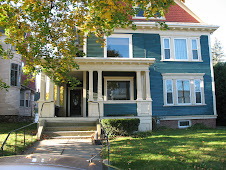“…How can we be in touch with suffering and work to transform it, but not react in ways that lead to further suffering?
…One of the most powerful images in the teachings of the Buddha – the image of the ‘two arrows’ helps us to clarify the nature of suffering and how we might learn to open to suffering without creating further suffering. It also suggests an important and precise distinction between what we might call pain and suffering.
We can imagine, the Buddha says, that when we experience pain, it is as if we were shot by an arrow. Each of us is sometimes shot by this arrow of pain. We each have a certain allotment of painful experiences, some of us more, others less. To be human is to be vulnerable to pain and at times to be in pain. Our soft bodies are easily injured and tend to break down over time. We are frequently startled and shocked – physically, emotionally, and mentally. We want meaning and connection, kindness and love, fairness and justice, yet we often find them lacking in our lives.
Typically, because of this first arrow of pain, we react in various ways. According to the Buddha, our reaction is equivalent to being shot by a second arrow. We can call this second arrow suffering. Suffering arises because when we experience pain –when we experience pain – when we are injured or startled, or lack meaning and love, or are treated unjustly – we typically react by lashing out, at ourselves and others. We believe somehow that this will dispel or mitigate the pain. We act in such a way that a second arrow is shot, at us or others, on account of the pain of the first arrow. When we act so that the second arrow is shot, we ‘pass on’ the original pain.
Suffering can thus be seen in large part as a kind or resistance or reaction to the pain of the present moment. We tend to react physically, emotionally, and/or mentally when we have unpleasant or painful physical sensations, emotions, or thoughts. When we experience physical pain, we tend to tense and contract around the pain, as if this will somehow assuage it. Some doctors say that perhaps 80 percent of what patients exper ience as physical pain is not the result of the original stimulus bur rather ongoing resistance to this stimulus.
Similarly, when there is emotional pain (think of the pain that may follow from a perceived slight by someone close to us or the breakup of an intimate relationship) we tend to comment at great length, produce a flow of emotions, and react physically as well, all on the basis of the original stimulus. We may generate anger and harsh judgments of self or others or rationalize continually, sulk in depression, find a scapegoat, or attempt to escape the pain through food, shopping, sex, or television…
…For the Buddha… the task of spiritual practice is not to rid ourselves of all pain, to prevent being shot by the first arrow. Rather, our core intention is to not shoot this second arrow."




1 comment:
Interesting stuff to read. Keep it up.
Want to share Diana Brown professinal blogger profile will link you to free gift card generator.
Post a Comment